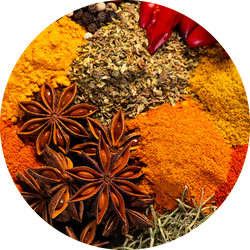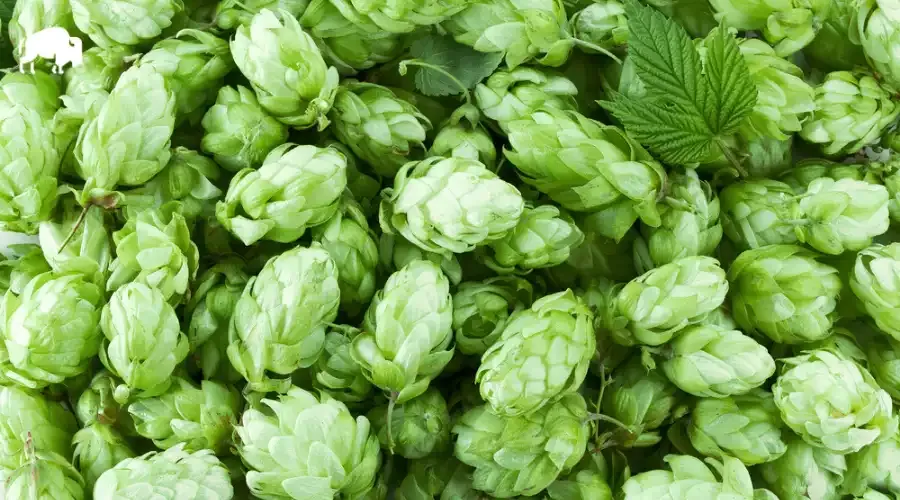
Lambic Hops were originally a Belgian hop cultivated in the Aalst-Asse area near Brussels in the nineteenth and first half of the twentieth century. Now, they are whole-leaf hops specifically aged for brewing wild ales and traditional Belgian-style beers like Lambic. YCH developed a process to ensure consistent quality and supply by creating aging chambers replicating Belgian “hop loft” conditions. The Aged Hops program uses only select hop varieties with suitable characteristics and aging abilities.
Lambic Hops are primarily used for early kettle additions, providing bitterness, polyphenol antioxidants, and rod-cell bacterial resistance to the wort. Due to their oxidized nature, adding the hops early in the brewing process is best to minimize any unpleasant characteristics and enhance absorption. They can be added loose, in mesh bags, or through custom dosing systems.
Lambic Hops are best suited for at least five beer styles: Lambic, Gueuze, Flanders Red Ale, Oud Bruin, and certain Wild Ales.
| Usage: | Aroma |
| Country of Origin: | United States |
| Hop Growers Code: | N/A |
Where To Buy Lambic Hops
Lambic Flavor And Aroma
Lambic is an aroma hop that is often described to have the following aroma characteristics:

grassy

spicy

woody
Lambic Hop Oil Breakdown
Hop oils can vary from year to year and farm to farm but based on our research, here are the typical values we have seen reported. This information comes from various hop farms, The Hop Aroma Compendium, and For The Love Of Hops.
| Alpha Acid % (AA) Alpha acids are what is isomerized when boiling to create bitterness in beer. | 1% – 2% |
| Beta Acid % Beta acids are what give hops their more aroma and flavor compounds. | 2.8% – 5% |
| Alpha-Beta Ratio This ratio of alpha acids to beta acids determines how quickly bitterness fades during aging. Lower ratios are common for aromatic varieties. | 0:1 – 1:1 |
| Co-Humulone as a % of Alpha Higher numbers are said to impart a harsher bitterness. | 29% – 35% |
| Total Oils (mL/100g) With more total oils, typically comes a more complex hop profile but these are highly volatile compounds. | 0.8mL – 1.2mL |
| Myrcene green, resinous | Data Not Available |
| Humulene woody, piney | Data Not Available |
| Caryophyllene woody | Data Not Available |
| Farnesene floral | Data Not Available |
| Other Oils: Includes beta-ionine, beta-pinene, limonene, linalool, geranoil & selinene | Data Not Available |
| Hop Storage Index (HSI) The HSI indicates the percent of alpha and beta acids lost after 6 months of storage at room temperature (68°F or 20°C). | Data Not Available |
| Hop Storage Index (HSI) Rating | Data Not Available |
Lambic Hop Substitutions
Replacing one hop for another is seldom straightforward but sometimes you don’t have the right hop or the right quantity of hops for the beer you want to make. For those situations, we have made a comprehensive list of hops to substitute on brew day.
These substitutions aren’t perfect as hop chemistry is pretty complex.
We wanted to make this list of substitutions with varietals that are easy to find when possible. For Lambic, we recommend substituting with the following hops:
Beer Styles
For the most part, any hop could have a place in just about any beer style. Based on popular beers, historical usage, and our own preferences, we would recommend using Lambic for IPA, New England IPA, Pale Ale, Wheat Beer, Golden Ale. That being said, experiment and see what works best for you.
References
https://www.hopslist.com/
https://www.ars.usda.gov/
https://www.brewersassociation.org/
https://www.barthhaasx.com/
https://www.yakimachief.com/
Hieronymus, Stan. For The Love of Hops. Brewers Publications, 2012
The Hop Aroma Compendium. 2012


